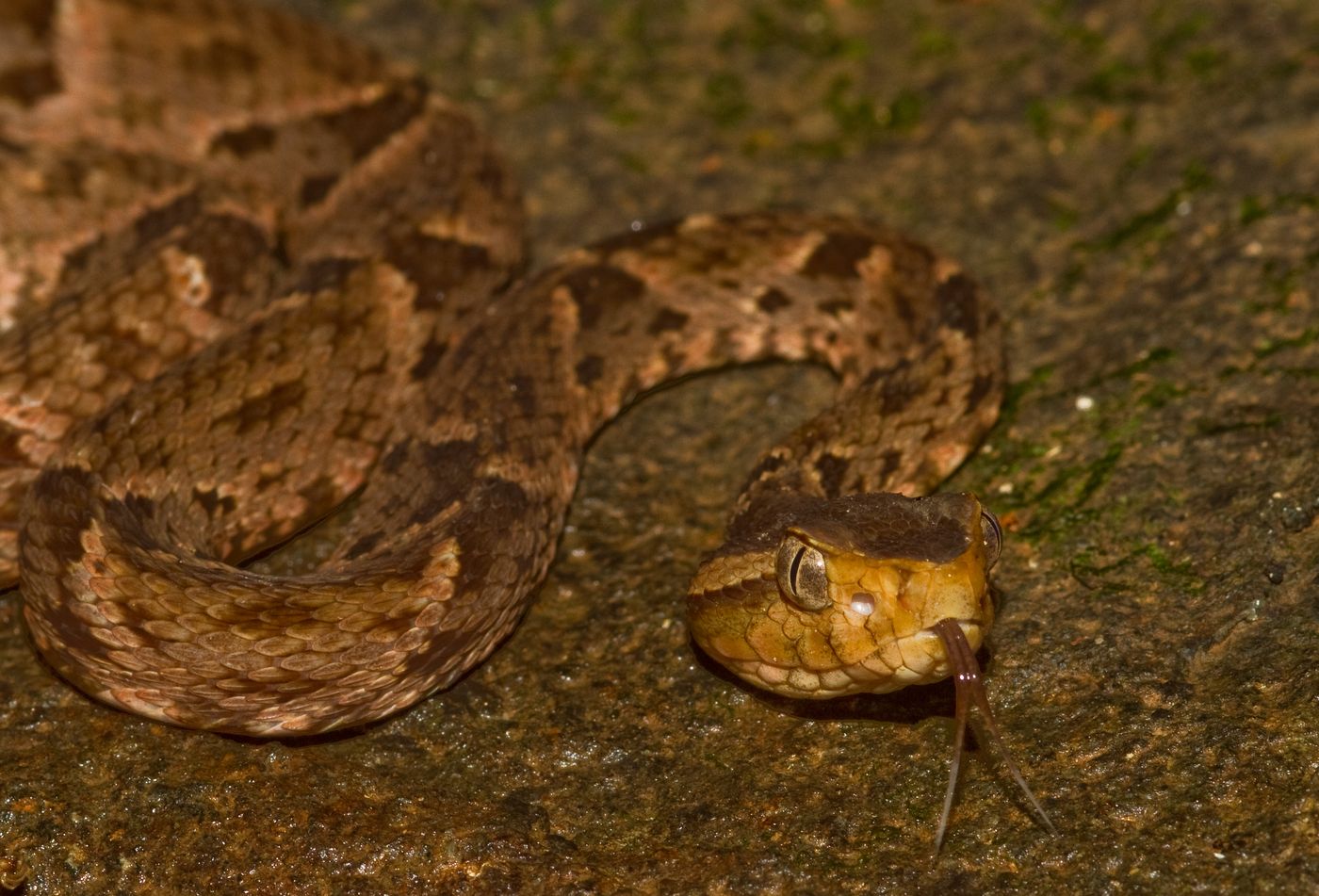Oops, We Made Snake Venom More Deadly
While pursuing therapeutic treatments, one group of scientists accidentally learned how to make snake bites more deadly.
Published in Nature Communications, a recent study conducted by Ph.D. student Christoffer V. Sorensen and colleagues from the Technical University of Denmark and Universidad de Costa Rica discovered the dark side of antibody treatments for animal toxins.
Fer-de-lance Bites and their Deadly Affects:
The venomous fer-de-lance snake (Bothrops asper) is one of the largest pit vipers, growing up to eight feet long. Native to Central and South America and with fangs extending up to 2.5 centimeters, these snakes are known for combining unpredictable and defensive behavior with swift, venomous strikes. Fer-de-lances pose a grave threat to humans, causing symptoms ranging from blistering and fever to more severe conditions like necrosis, amputation, and death.
Image by Brian Gratwicke CC By-SA 2.0
A compound called myotoxin II contributes to the fer-de-lance venom's necrotizing effect. Myotoxin II attaches to the plasma membrane of skeletal muscle cells and causes cellular death. Neutralizing myotoxin II is crucial for minimizing local tissue damage. Unfortunately, producing traditional antivenoms on a large scale proves challenging and pricey. They also pose the risk of adverse reactions. The field of antivenom production has turned towards human monoclonal antibodies – a promising, safer, and potentially more effective alternative.
Antivenom Discovery: A Tale of Two Models
Undertaking the challenge, Sorensen and team navigated the complexities of antibody development using two distinct rodent models. The preincubation model is the gold standard, in which venom and antibodies are combined before injection. The second model simulates a real-life snakebite scenario, injecting venom first and administering the antibody with a time delay.
The antibody, on its own, posed no threat. When combined with the venom, it proved beneficial. But a terrifying revelation unfolded in the real-life rescue model.
The scientists discovered the first case of "antibody-dependent enhancement of toxicity" (ADET) with an animal toxin. The monoclonal antibodies Sorensen and the team developed intensified the fer-de-lance venom's myotoxic effect. This lethal response would have gone unnoticed if the scientists had failed to include the real-life rescue model methodology.
Deadly Implications for Research Oversight
This unprecedented finding raises glaring concerns. Obviously, the study challenges the adequacy of the preincubation model, implying its insufficiency in testing antivenom efficacy. ADET, now proven possible in animal toxins, underscores the urgency for proper testing for engineered monoclonal antibodies. Incomplete study designs could lead to a scenario no one wants: more deadly snake bites.
Sorensen et al.'s research urges us to tread carefully through the wet habitat of the fer-de-lance and in pursuit of effective antivenom solutions.
Sources: Animalia, The Journal of Venomous Animals and Toxins Including Tropical Diseases, Nature Communications, A-Z Animals









